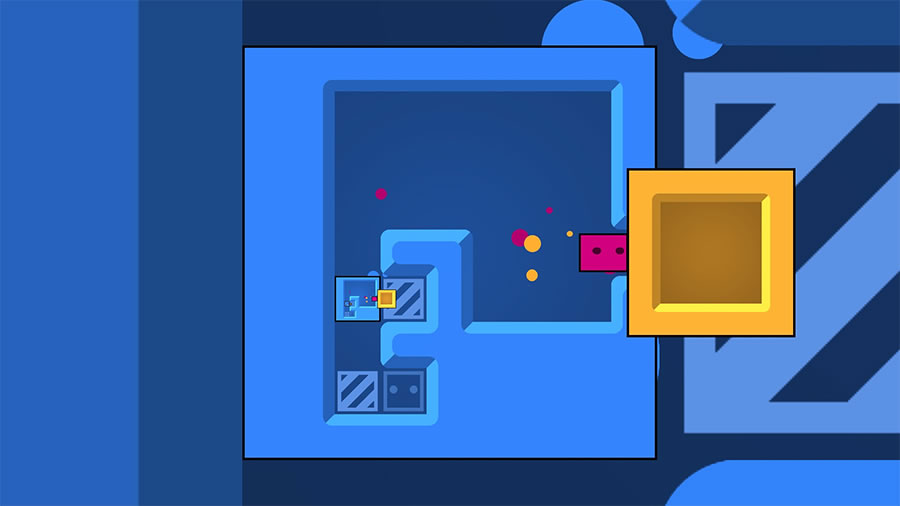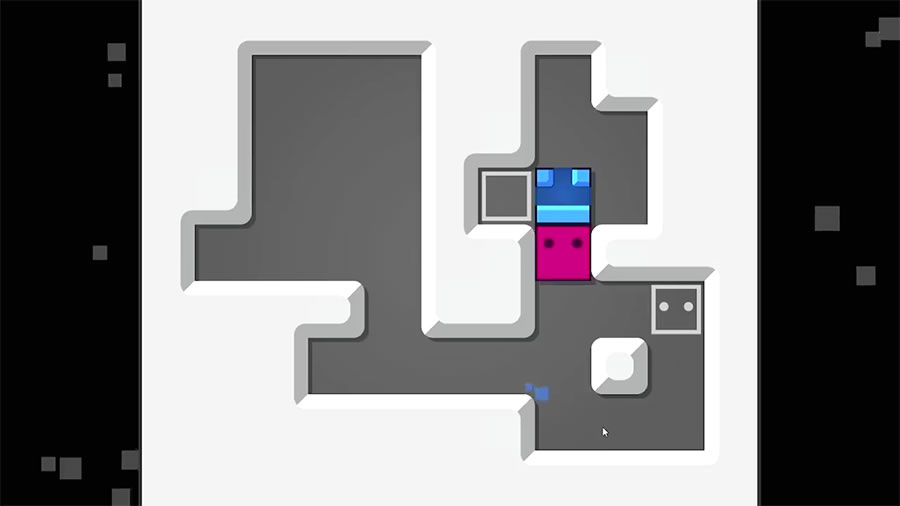- CLASSIC MAGAZINES
- REVIEW CREW
A show recapping what critics thought back
when classic games first came out! - NEXT GENERATION'S BEST & WORST
From the worst 1-star reviews to the best
5-stars can offer, this is Next Generation! - NINTENDO POWER (ARCHIVE)
Experience a variety of shows looking at the
often baffling history of Nintendo Power! - MAGAZINE RETROSPECTIVE
We're looking at the absolutely true history of
some of the most iconic game magazines ever! - SUPER PLAY'S TOP 600
The longest and most ambitious Super NES
countdown on the internet! - THEY SAID WHAT?
Debunking predictions and gossip found
in classic video game magazines! - NEXT GENERATION UNCOVERED
Cyril is back in this spin-off series, featuring the
cover critic review the art of Next Generation! - HARDCORE GAMER MAGAZING (PDF ISSUES)
Download all 36 issues of Hardcore Gamer
Magazine and relive the fun in PDF form!
- REVIEW CREW
- ELECTRONIC GAMING MONTHLY
- ELECTRONIC GAMING MONTHLY RANKS
From Mario to Sonic to Street Fighter, EGM
ranks classic game franchises and consoles! - ELECTRONIC GAMING MONTHLY BEST & WORST
Counting down EGM’s best and worst reviews
going year by year, from 1989 – 2009! - ELECTRONIC GAMING BEST & WORST AWARDS
11-part video series chronicling the ups and
downs of EGM’s Best & Worst Awards!
- ELECTRONIC GAMING MONTHLY RANKS
- GAME HISTORY
- GAME OVER: STORY BREAKDOWNS
Long-running series breaking down game
stories and analyzing their endings! - A BRIEF HISTORY OF GAMING w/ [NAME HERE]
Real history presented in a fun and pithy
format from a variety of game historians! - THE BLACK SHEEP
A series looking back at the black sheep
entries in popular game franchises! - INSTANT EXPERT
Everything you could possibly want to know
about a wide variety of gaming topics! - FREEZE FRAME
When something familiar happens in the games
industry, we're there to take a picture! - I'VE GOT YOUR NUMBER
Learn real video game history through a series
of number-themed episodes, starting at zero! - GREAT MOMENTS IN BAD ACTING
A joyous celebration of some of gaming's
absolute worst voice acting!
- GAME OVER: STORY BREAKDOWNS
- POPULAR SHOWS
- DG NEWS w/ LORNE RISELEY
Newsman Lorne Riseley hosts a regular
series looking at the hottest gaming news! - REVIEW REWIND
Cyril replays a game he reviewed 10+ years
ago to see if he got it right or wrong! - ON-RUNNING FEUDS
Defunct Games' longest-running show, with
editorials, observations and other fun oddities! - DEFUNCT GAMES QUIZ (ARCHIVE)
From online quizzes to game shows, we're
putting your video game knowledge to the test!- QUIZ: ONLINE PASS
Take a weekly quiz to see how well you know
the news and current gaming events! - QUIZ: KNOW THE GAME
One-on-one quiz show where contestants
find out if they actually know classic games! - QUIZ: THE LEADERBOARD
Can you guess the game based on the classic
review? Find out with The Leaderboard!
- QUIZ: ONLINE PASS
- DEFUNCT GAMES VS.
Cyril and the Defunct Games staff isn't afraid
to choose their favorite games and more! - CYRIL READS WORLDS OF POWER
Defunct Games recreates classic game
novelizations through the audio book format!
- DG NEWS w/ LORNE RISELEY
- COMEDY
- GAME EXPECTANCY
How long will your favorite hero live? We crunch
the numbers in this series about dying! - VIDEO GAME ADVICE
Famous game characters answer real personal
advice questions with a humorous slant! - FAKE GAMES: GUERILLA SCRAPBOOK
A long-running series about fake games and
the people who love them (covers included)! - WORST GAME EVER
A contest that attempts to create the worst
video game ever made, complete with covers! - LEVEL 1 STORIES
Literature based on the first stages of some
of your favorite classic video games! - THE COVER CRITIC
One of Defunct Games' earliest shows, Cover
Critic digs up some of the worst box art ever! - COMMERCIAL BREAK
Take a trip through some of the best and
worst video game advertisements of all time! - COMIC BOOK MODS
You've never seen comics like this before.
A curious mix of rewritten video game comics!
- GAME EXPECTANCY
- SERIES ARCHIVE
- NINTENDO SWITCH ONLINE ARCHIVE
A regularly-updated list of every Nintendo
Switch Online release, plus links to review! - PLAYSTATION PLUS CLASSIC ARCHIVE
A comprehensive list of every PlayStation
Plus classic release, including links! - RETRO-BIT PUBLISHING ARCHIVE
A regularly-updated list of every Retro-Bit
game released! - REVIEW MARATHONS w/ ADAM WALLACE
Join critic Adam Wallace as he takes us on a
classic review marathon with different themes!- DEFUNCT GAMES GOLF CLUB
Adam Wallace takes to the links to slice his way
through 72 classic golf game reviews! - 007 IN PIXELS
Adam Wallace takes on the world's greatest spy
as he reviews 15 weeks of James Bond games! - A SALUTE TO VAMPIRES
Adam Wallace is sinking his teeth into a series
covering Castlevania, BloodRayne and more! - CAPCOM'S CURSE
Adam Wallace is celebrating 13 days of Halloween
with a line-up of Capcom's scariest games! - THE FALL OF SUPERMAN
Adam Wallace is a man of steel for playing
some of the absolute worst Superman games! - THE 31 GAMES OF HALLOWEEN
Adam Wallace spends every day of October afraid
as he reviews some of the scariest games ever! - 12 WEEKS OF STAR TREK
Adam Wallace boldly goes where no critic has
gone before in this Star Trek marathon!
- DEFUNCT GAMES GOLF CLUB
- DAYS OF CHRISTMAS (ARCHIVE)
Annual holiday series with themed-episodes
that date all the way back to 2001!- 2015: 30 Ridiculous Retro Rumors
- 2014: 29 Magazines of Christmas
- 2013: 29 Questionable Power-Ups of Christmas
- 2012: 34 Theme Songs of Christmas
- 2011: 32 Game Endings of Christmas
- 2010: 31 Bonus Levels of Christmas
- 2009: 30 Genres of Christmas
- 2008: 29 Controls of Christmas
- 2007: 34 Cliches of Christmas
- 2006: 33 Consoles of Christmas
- 2005: 32 Articles of Christmas
- 2004: 31 Websites of Christmas
- 2003: 29 Issues of Christmas
- 2002: 28 Years of Christmas
- 2001: 33 Days of Christmas
- NINTENDO SWITCH ONLINE ARCHIVE
- REVIEW ARCHIVE
- FULL ARCHIVE
Patrick's Parabox
Back in the day, when my mom got me Boxxle for my brand-new Game Boy, I had no idea how instructive it would end up being. After all, it was little more than a game about pushing boxes around a room, yet we've seen that kind of puzzle pop up in some genuinely surprisingly places over the last thirty years. The newest spin on the crate-pushing genre is Patrick's Parabox, a trippy new puzzle game with an almost endless supply of crazy ideas. In fact, there are so many wrinkles to the formula here that after Patrick's Parabox, I doubt we'll ever need to push another crate again. Looks like we're going to need to find another back-breaking task to turn into a puzzle cliché. Here's my review of Patrick's Parabox.
At first glance, Patrick's Parabox doesn't look that different from Boxxle on the Game Boy. It's a game where a colored box with eyes pushes around other boxes in order to solve puzzles. This is a concept you've seen countless times before. But don't dismiss it just yet, because this is actually a puzzle game where there are boxes within boxes within boxes. That's right, this is the Inception of crate-pushing games, where you'll manipulate reality by shrinking smaller and smaller in order to go inside other boxes and find the solutions.
The good news is that the game does a great job of easing you into this mind-bending concept. We'll start out by using the shapes inside of the boxes to get around tricky environments, which will quickly turn into pushing the bigger boxes into the smaller boxes so that you can fit all three into an even smaller box. There are also stages built around portals, clones, transfers and so much more. Each new area finds a way to work a new mechanic into the mix, something that will force you to completely rethink the how you're going to approach each stage.
There are a few things you'll need to keep in mind, no matter what level you're trying to solve. For starters, our little box can only push, so if you accidentally move a box next to the wall, the only way to pull it back is to reverse time and back up a few steps. You'll also find that you can move multiple boxes at the same time, so you can throw away the smart idea of using a crate as an anchor. A lot of the levels look incredibly easy at first, only to reveal their true challenge when you realize that you can't put the box there or shrink when you want to. Even when I hit a wall (both literally and figuratively), I couldn't get over how clever the puzzles were. And it's in both big ways and small. There were so many times when I had to stop for a moment and marvel at a level's ingenuity.
What's especially impressive is that there are more than 350 of these expertly-crafted stages, yet none of them feel like filler. Each new area will introduce a new wrinkle to the gameplay, and then the game will play with that concept until it either runs out of ideas or gets bored. For a game about pushing boxes around, there's very little repetition in the puzzles. And best of all, you don't even need to beat all of the levels in an area to move on. This keeps the pace fast, while also giving you a lot of content to come back and experience. Trust me, this is not one of those games you're going to beat in one or two sittings. You'll be picking away at Patrick's Parabox for some time to come.
A lot of the reason why all this works so well is because of its simplicity. Even though it can sometimes take a moment to wrap your head around the different layers in each puzzle, all you're required to do is push a box around. This is a game that knows you're going to get stuck from time to time, so the developer wisely added a rewind button, as well as a button that will reset the level back to its starting position. The levels and pieces may get more complicated, but the gameplay and goals are always simple. Patrick's Parabox makes a strong argument that you can do a lot more than you might think with a simple premise. Puzzle developers can learn a lot from the designs and mechanics found in this game.
In that sense, Patrick's Parabox is hard to criticize. It's a purposely simple concept with a complementary art style that doesn't get in the way of the game's hidden depth. The gameplay is responsive and has enough outs so that you never get struck to the point of frustration. And even when you can't solve an especially tough puzzle, you're never forced to stick with it. There are hundreds of stages to jump around and play, all of them with fresh new ideas and never any filler. And, best of all, it has a great soundtrack full of catchy songs you won't be able to get out of your head. The only way you're not going to love Patrick's Parabox is if you simply don't like puzzle games. Everybody else will find an instantly likeable game with endlessly innovative puzzle designs. I cannot recommend it strongly enough.
HOME |
CONTACT |
NOW HIRING |
WHAT IS DEFUNCT GAMES? |
NINTENDO SWITCH ONLINE |
RETRO-BIT PUBLISHING
Retro-Bit |
Switch Planet |
The Halcyon Show |
Same Name, Different Game |
Dragnix |
Press the Buttons
Game Zone Online | Hardcore Gamer | The Dreamcast Junkyard | Video Game Blogger
Dr Strife | Games For Lunch | Mondo Cool Cast | Boxed Pixels | Sega CD Universe | Gaming Trend
Game Zone Online | Hardcore Gamer | The Dreamcast Junkyard | Video Game Blogger
Dr Strife | Games For Lunch | Mondo Cool Cast | Boxed Pixels | Sega CD Universe | Gaming Trend
Copyright © 2001-2025 Defunct Games
All rights reserved. All trademarks are properties of their respective owners.
All rights reserved. All trademarks are properties of their respective owners.





































